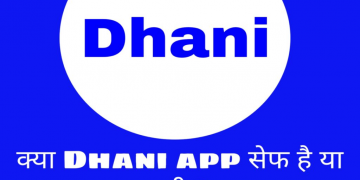In 2020, when the pandemic hit the world, it affected a large number of people worldwide. The majority of people were locked inside their homes, and everything came to a halt. The biggest question for students and teachers was how to continue their studies. It resulted in online learning, which was not a new concept, has gained traction since the pandemic. As education apps become more popular, they are changing the way students learn both in and out of school.
Mobile learning is the primary educational trend that is spreading and becoming more popular around the world. E-learning is becoming more accessible as smartphones and internet penetration rise. Tablets and smartphones are no longer regarded as distractions, cheating devices, or addictive devices.
There is a huge opportunity to learn online, develop new teaching methods, and quickly gain skills and knowledge. The number of people using educational apps, as well as e-learning software development companies, has grown significantly. We expect the trend to continue in 2022.
Here are some statistics that demonstrate how education apps have grown since the pandemic.–
According to Research and Markets data, the global e-learning market is expected to be worth $398 billion by 2026. This represents a 300 percent increase from the $107 billion market in 2015.
After growing by 17% year on year in 2018, and 18% year on year in 2019, education apps grew by 30% year on year in the first quarter of 2020.
Experts predict that the market for mobile education will grow by $46.9 billion at a CAGR of about 26 percent between now and 2024.
China, Italy, the United States, and Spain had the most downloads. When compared to pre-COVID-19, China saw a more than 250 percent increase in education app downloads. Australia experienced the greatest increase in education app downloads, with a 190 percent increase in peak week in 2020 compared to the weekly average in the fourth quarter of 2019.
The benefits of e-learning apps in terms of convenience, time savings, and cost effectiveness cannot be overstated. A new mobile e-learning solution has a better chance of success than ever before because it would introduce a completely new market strategy. Don’t pass up this opportunity to create such an application! However, if you want your e-learning app to be successful and profitable, you must stay current on app development trends and work to incorporate them into your product, which top educators do on a regular basis.
If you’re looking for an innovative education app development, here are the top education app development trends to watch for in 2022.:
Mobile App with Video Content – When it comes to online videos, there is no doubt that YouTube is the most popular platform. YouTube currently has over 2 billion monthly active users, and 46.7 percent of all active mobile internet users log on to YouTube on a monthly basis. However, not all of them have videos or pass time videos on the platform. A small percentage of these viewers also visit YouTube to watch educational videos on channels such as Ted-Ed and National Geographic.
If you can incorporate video content into mobile learning apps, it will be more interactive and user-friendly. Because moving pictures are the most effective way to learn new information.
Don’t limit yourself to school students when it comes to education apps. Many organisations around the world use education apps to host webinars and train their employees on new and trending topics. If you can offer your users the option of streaming and video chat, you will have a complete package for them and will be highly competitive in the market.
AI in education apps – Using Artificial Intelligence to understand user behaviour, you can personalise educational apps. AI can be used in complex data analysis algorithms to assist students in learning as well as to improve educational management systems. AI capabilities will enable half of the learning management tools developed on the educational theme by 2024.
Voice assistants, for example, will allow students to interact with course material without involving the teacher. Small children adore the voice-interaction feature of educational apps, and some of them are doing exceptionally well in this category.
Another reason AI-based educational apps will continue to grow is that they make apps accessible to everyone, regardless of disability or language. For teachers, AI can handle grading, freeing up a lot of time that can be used to prepare more informative lessons, improve the quality of material, and do other things.
Personalized Educational apps – People are increasingly turning to mobile apps in education because they provide a more personalised experience. They get to learn whatever they want. If you are thinking about investing in an educational app, you should think about one that allows for personalization. Personalization gives students more control over their learning process and a better learning experience.
When we talk about personalization, we don’t just mean in terms of content. A personalised education app also allows users to customise the app’s look and feel. Allow them to customise the colours of the apps’ backgrounds, sounds, and avatars.
You can make the learning process more enjoyable, comfortable, and rewarding for them by giving them only the lessons they are interested in and need to learn. With all of these personalised experiences, they are more likely to stay on your platform for a longer period of time. You should create content that is tailored to your users’ personal preferences, interests, previous experience, goals, and needs.
Gamification for fun learning – For several years, students have been told that learning should be enjoyable. On the ground, however, there is no significant change. Students are still learning in the same ways.
Gamified education apps are changing the way students learn. These apps are suitable for students of all ages; it is a revolutionary approach that will change the way students learn.
Education apps provide students with a fun environment in which to face real-life challenges and deal with other situations. Children learn through play, and by combining education and play, you can avoid forcing them to sit and study.
You must exercise caution in striking a balance between learning and entertainment. If the balance is not maintained, the app’s entire purpose will be defeated. The best approach would be to focus on learning first, then add an element of entertainment to support learning outcomes. The app’s primary goal is to educate, and no compromises should be made in this regard. The games should know when to take students’ learning to the next level. Winning a game helps students gain confidence by taking their learning to the next level.
All of this would not have been possible a decade ago, but thanks to technological advancements, creating such apps is now simple, and such apps are becoming increasingly popular. It is expected to be the most popular trend in 2022.
Many people want to learn new things through microlearning. However, not everyone has the time to devote to completing a course in a week. Second, it is not just a matter of time; it is also a matter of focus and attention. Most people fail to do it because they have too much to deal with in their daily lives. Microlearning apps are gaining popularity for the same reason, and this trend will likely continue in the future.
Microlearning is the process of breaking down the educational process into small multiple parts for students (or users of any age group) so that they don’t have to spend more than five to ten minutes at a time. Even if they have limited time, they can continue to learn.
Microlearning in education apps can solve these problems while also attracting a wider age group audience to your app. According to experts, the microlearning app increases learning efficiency by 17%.
The best approach would be to start with a traditional educational app and then add microlearning as a bonus.
Conclusion
Without a doubt, e-learning is here to stay. With the pandemic promoting e-learning app, an increasing number of leaders are seeing how they can save money by moving their content online. Despite this, there is still a significant gap that must be filled, and those who are able to fill it will undoubtedly benefit.
Nowadays, the entire world’s economy is dependent on the development and quality of mobile software. E-learning via mobile, desktop, and smart devices is at the heart of education today, as it allows students to learn anything and anywhere, making them popular and, in some cases, indispensable. People today prefer to access educational materials via their mobile devices.


























































